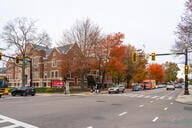You have /5 articles left.
Sign up for a free account or log in.

Michael Dannenberg
Education Reform Now
Half a million college students enroll in some type of remedial course after graduating high school.
And that remediation can be costly, not only to colleges, but to students and their families. Those costs can raise the overall price of attending college.
A new report from researchers at Education Reform Now, a nonpartisan, nonprofit organization, found that enrolling in remedial course work during the first year of college costs students and their families nearly $1.5 billion a year in out-of-pocket expenses.
Those expenses do not include grants and financial aid students receive, said Michael Dannenberg, the group's director of strategic initiatives for policy and a co-author of the report.
"Other studies have looked at how much institutions spend on remedial and developmental education, but we have looked at out-of-pocket costs families spend on these courses," he said. "And we're looking at it in a conservative way. We're only looking at students immediately after high school."
The report also found that underprepared college students come from families across all income levels. In 2011, one in four students entering college after high school needed remediation, and of those students, 45 percent came from families making at least $48,000 a year. In addition, underprepared students from families in the top income quintile, or those making at least $113,440 a year, who attended private, nonprofit four-year colleges spent on average more than $12,000 to "study content they should have learned in high school," the report said.
Public high school students should get high-quality educations, said Mary Nguyen Barry, co-author of the report and a senior policy analyst for the group. But the cost of preparing for college has shifted to the privatized higher education market, she said, where students and families are asked to pick up the extra burden their property taxes should have provided.
However, the blame for large numbers of students not passing college-level math and English courses doesn't fall solely on the K-12 sector, said Dannenberg, who is a former official at the U.S. Department of Education.
"It's a two-way street. The high schools need to be more academically rigorous and colleges need to change the way they teach students who come in behind. And both sectors need to be held accountable for the results," he said. "Students who need remediation at the postsecondary level are more likely to drop out than students who don't need remediation."
The dropout risk for four-year-degree-seeking students who need remediation is 74 percent worse than nonremedial students, he said.
"We talk so much about college affordability, and this is a major factor that is making college even more expensive than it should be," Barry said.
Some high schools and institutions are teaming up to provide remediation before students enroll in college.
In Washington State, students who show they're not ready for college-level material on the 11th grade state exam, known as the Smarter Balanced Assessment, can take courses in high school that were designed by a partnership of colleges and high schools to remediate before they graduate. If those students show they can meet the standard in their 12th grade year, when they enroll in college they are automatically placed in credit-bearing gateway courses rather than remedial courses, said Joni Swanson, executive director of teaching and learning for the Mount Vernon School District, north of Seattle.
Swanson, who worked as an assistant superintendent of a school district in Illinois, helped create a similar dual-enrollment type of remedial bridge course for her students at that school district. A number of other states offer dual-credit programs between colleges and high schools that offer developmental or remedial courses.
"The most important thing I noticed from offering those types of courses is the student's mind-set about going to a postsecondary institution dramatically changed to the positive as a result of having a positive or successful result in these courses," said Swanson. "It showed students who were struggling that they really could achieve at that level to be successful."




